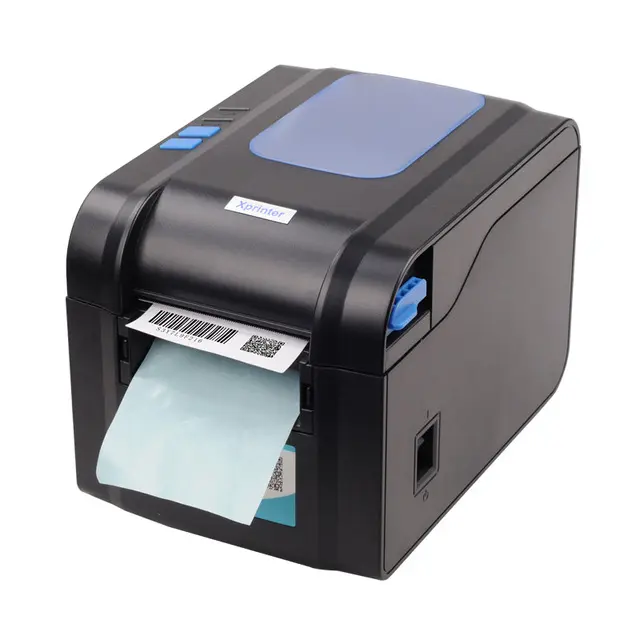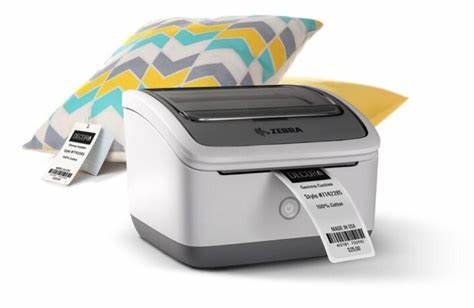Barcode Scanning: From Laser to Imager
Whether you realize it or not, barcodes are one of the most influential technologies of the 20th century. The simple black and white bar graph you’ll find on every product helps increase efficiency, allowing for massive tracking across the globe. Without humble barcodes, many businesses would not be able to operate. Without barcodes, it’s almost impossible to imagine tracking anything accurately.
Historically, laser-based scanners have been used to read barcodes. These laser scanners can still be found in many applications today. Although laser scanners have improved in speed and accuracy, the technology remains largely the same as it was when it was originally developed in the 1970s.
Today, however, readers use two technologies for barcode scanning: lasers and imagers. The imager offers several improvements over conventional lasers, while also offering important new capabilities, such as the ability to read 2D barcodes. In the past, imagers may have been used only in special situations, but today they offer advantages over lasers that can help improve almost any scanning application.
Choosing the right scanning solution can be confusing. Many times a specific scanner will “fit” your specific scanning needs, but it may not be the most efficient option. Knowing the benefits of each scanning technology will help you choose a scanner that will give you the best performance and the most benefit. Let’s review the technology…
Technology: Laser Scanner
Laser has been used for barcode scanning since the beginning. Due to their reliable performance and low cost, they have become the industry standard for reading linear (1D) barcodes. Walk around any retail store, from the supermarket to the local convenience store, and you’ll find that laser scanners work hard.
At this point, almost everyone intuitively knows how to use a laser scanner. Align the red line with the barcode and pull the trigger. Simple!
Their simplicity and ease of use is a big part of what makes them so valuable. They may come in many forms, such as standard hand-held firearms, demo models that don’t require triggering, and the in-counter devices seen in grocery stores, but they all work the same way.
How exactly do they work?
With a laser scanner, when you aim the laser horizontally at the black and white bars in the code, it is either absorbed (black line) or reflected (blank). When you pull the trigger, the scanner picks up the reflected light to determine the pattern of the code and the information embedded in it. Think of it like a switch that turns on and off very quickly.
This is a reliable and economical scanning method for standard linear barcodes. However, when you start dealing with poorly printed codes that don’t reflect/absorb the laser properly, laser scanners won’t provide good reading. Also, when trying to read a code, you must make sure that the laser line passes through the complete code. If part of the code is damaged or the scan angle is too large, you will not get a positive reading.
Laser scanners are probably the most common, but do have their limitations. For applications where low-volume scanning or barcodes are always perfect, laser scanners are hard to beat. In practice, however, many applications encounter the limitations of this technology. Here, advances in imaging scanners can provide you with the right solution.
Technology: Imaging Scanners
Although they may be new, imaging scanners (imagers) have rapidly gained popularity in many applications. From retail checkout to medical fields, imagers are being used for enhanced functionality and active reading.
To best understand the difference imagers make, we should first know how they work.
Imagers differ from laser scanners in that instead of trying to read reflected light from the barcode, the imager can take a picture of the barcode. They are optimized to distinguish high-contrast black and white barcodes, which are then quickly analyzed to decode the information. At first glance, this process may be slower than laser scanning. However, over the past few years, technology and decoding algorithms have gotten smart enough to be as fast as conventional lasers, if not faster.
The first advantage of the imager is that since it does not rely on reflected light, it can read barcodes in any orientation on any surface (print or screen, up and down or side to side)! The imager does the work for you by understanding how the code should be read after the image is captured. Scan faster because you no longer need to precisely align scanner lines throughout your code. Just put the code in front of the scanner and pull the trigger.
You can also read damaged or poorly printed codes, something a laser scanner will never be able to do. Imagers have more tolerance when the image is not dark enough or washed out because they are processing the image rather than reflecting light. In the case of a damaged code, the laser will not be able to read it without a clean straight line on the code. Imagers are smart enough to still extract information from code as long as it can be read from somewhere in the code.
Another important advantage provided by imagers is that they can read any type of barcode. 1D, stacked, 2D and even postal barcodes are no problem. If you need to read a variety of barcode types, a 2D imager is the obvious choice. But even if you don’t use 2D or stacked codes today, you can read them, expanding how barcodes can be used and scanned by business.
The last thing to keep in mind is that there are technically two types of imagers. Full 2D imagers can read any code, while linear imagers are only optimized for 1D codes. When you just want a basic replacement for a laser scanner, a linear imager will give you the advantages of an imager for the same cost as a laser. 2D imagers cost more, but they will also allow you to scan other types of codes.
If you want to increase the speed and efficiency of your current scanning application, you can switch to an imager to see the results immediately. They may be a bit more expensive, but their benefits make the scanning process better and more powerful.
Extend barcode functionality with 2D scanning
Using an imager, your business can start using 2D barcodes that 1D barcodes can’t.
Some of the most common alternative uses for imagers are:
Age verification
Scan the stacked barcodes on your driver’s license to confirm it’s valid and confirm the individual’s age with a single scan. Simple, accurate scanning solutions protect your business from fines, legal fees and lost time.
Create a client account
Using the same code on your driver’s license, you can quickly gather all of your customers’ contact information. Create a client account or fill out a credit application without inconvenience to your clients or employees.
Coupon
Email Email or send customers a coupon with a 2D barcode that you can easily scan at the POS next to their phone screen. Track coupon usage more easily with 2D codes and use unique codes for each customer and promotion.
Events
Tickets are similar to coupons in that they can be issued electronically and then scanned from a phone screen. Without involving printing tickets, you can reduce overall costs and reduce the likelihood of forged tickets.
Image capture
Since the imager is actually a type of camera, many models can also take basic photos. Depending on your application needs, your scanner can help document damage by acting as a camera, capture signatures on forms, or even take photo ID.
With more information in 2D barcodes and the ability to read from any surface, you can simplify previous processes while reducing the amount of paperwork and printing required. The list of possible uses for imagers is really only limited by your creativity in using barcodes.
Barcode Scanning in Enterprise
Nearly every business today uses barcodes in some way. The scanner is a core component in every scanning and tracking application and ultimately affects the success of the scanning application. Installing the wrong or poor quality scanner will limit your efficiency with barcodes.
Historically, laser scanners may have been the most common type, but that doesn’t mean they’re always the best choice for your application. Although they may cost a bit more, imagers offer many performance and functional advantages over lasers. These differences can determine whether you are using barcode scanning in the most efficient way to conduct your business.
Make the most of barcode scanning in your business. Just pull the trigger!




